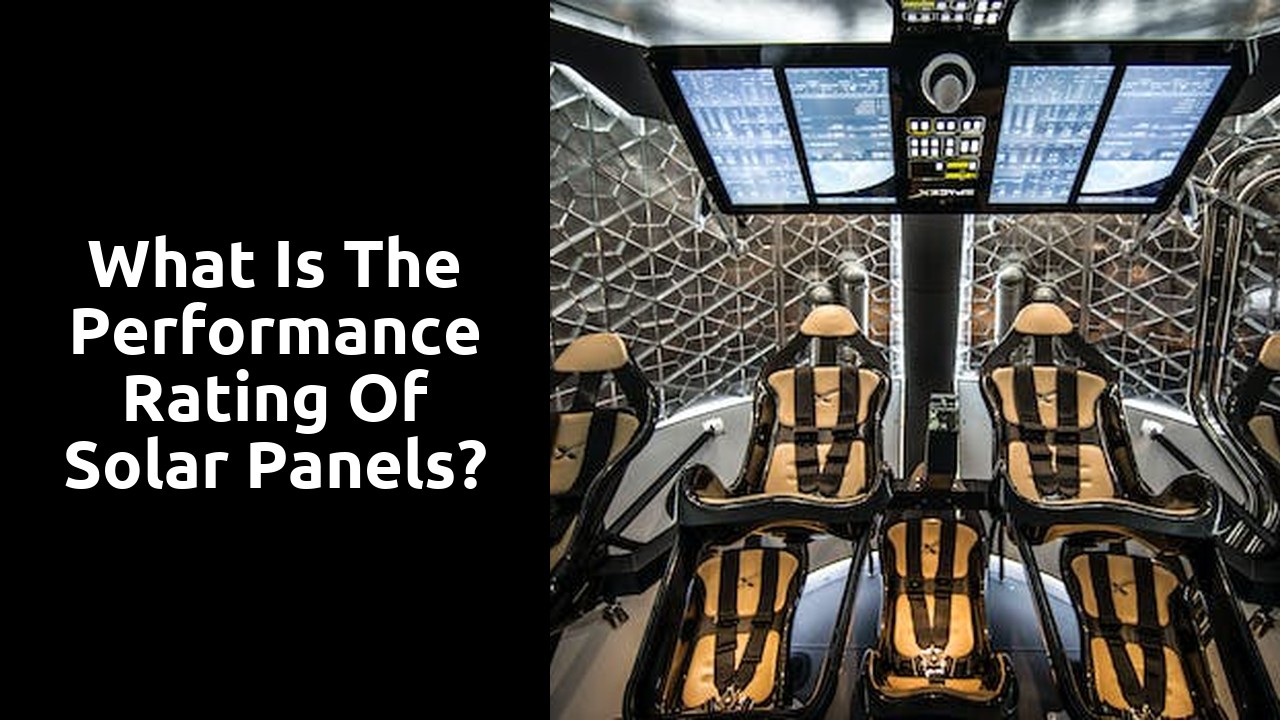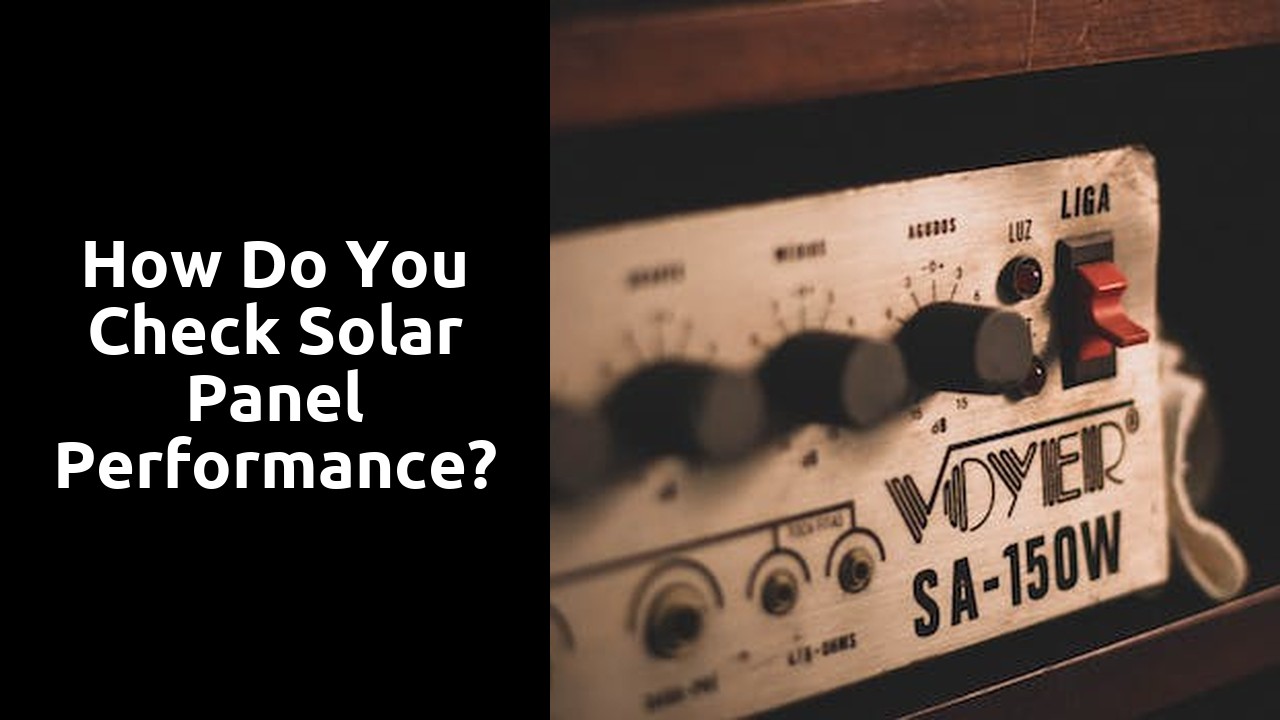
Effect of Shading on Solar Panel Performance
Shading can significantly impact solar panel performance by reducing the amount of sunlight reaching the panels. When even a small portion of a solar panel is shaded, it can lead to a notable decrease in the overall energy production of the system. Australian households and businesses investing in solar panels must be mindful of potential shading issues to ensure optimal performance. It is recommended to regularly assess the surroundings of solar panels to identify any obstructions that could cast shadows at different times of the day. By conducting thorough Solar Panel System Performance Analysis, owners can take proactive measures to minimize shading and maximize energy generation.
Moreover, shading not only reduces the immediate output of solar panels but can also affect the longevity of the system. When parts of the panel are shaded, it can create "hot spots" that lead to increased temperatures in those areas. These elevated temperatures can cause damage to the solar cells over time, decreasing the overall efficiency and lifespan of the system. Therefore, it is vital for solar panel owners to address shading issues promptly and consider solutions such as repositioning panels, trimming trees, or installing shading mitigation devices. Implementing these strategies based on Solar Panel System Performance Analysis can help maintain the optimal functioning of the solar panels and ensure long-term energy savings.
How Does Shading Impact the Output of Solar Panels?
Shading has a significant impact on the output of solar panels. When even a small portion of a solar panel is shaded, the entire panel's efficiency can decrease. This is due to the interconnected nature of solar cells within a panel - if one cell is shaded, it can affect the entire circuit. As a result, shading can lead to reduced energy production and overall efficiency of the solar panel system.
To quantify the impact of shading on solar panels, a thorough Solar Panel System Performance Analysis needs to be conducted. This analysis will identify areas that are prone to shading throughout the day and year. By understanding when and where shading occurs, adjustments can be made to mitigate its effects on the solar panel system. Ultimately, minimising shading will help maximise the overall performance and output of the solar panels.
Understanding the Impact of Tilt and Orientation on Solar Panel Efficiency
When it comes to assessing the efficiency of solar panels, the tilt and orientation play a crucial role in determining the overall performance. The angle at which solar panels are installed significantly impacts the amount of sunlight they can capture throughout the day. Research in Solar Panel System Performance Analysis has shown that the ideal tilt angle for solar panels in Australia is generally equal to the latitude of the installation location. For example, in Sydney which is at a latitude of approximately 33 degrees, the optimal tilt angle for solar panels would be around 33 degrees to maximise sunlight absorption.
In addition to tilt angle, the orientation of solar panels also plays a key role in their efficiency. In the southern hemisphere, such as Australia, solar panels should ideally face north to receive the highest amount of sunlight exposure throughout the day. Solar Panel System Performance Analysis indicates that solar panels facing true north typically produce the highest energy output. However, for locations where north-facing installation is not possible, adjustments can be made to east or west-facing orientations, albeit with reduced efficiency compared to north-facing setups.
What Is the Ideal Tilt and Orientation for Solar Panels?
When it comes to maximizing the efficiency of your solar panel system, understanding the ideal tilt and orientation is crucial. The tilt of solar panels refers to the angle at which they are installed relative to the horizontal plane. In Australia, the optimal tilt angle for solar panels typically ranges between 15 to 30 degrees to capture the maximum amount of sunlight throughout the year. This angle allows for the panels to receive sufficient sunlight during both the summer and winter months, thereby enhancing the overall Solar Panel System Performance Analysis.
In addition to tilt, the orientation of solar panels plays a significant role in their performance. The orientation refers to the direction in which the panels face, with solar panels facing north in the southern hemisphere and south in the northern hemisphere to receive the most sunlight. In Australia, installing solar panels facing due north is generally recommended to ensure they receive adequate sunlight exposure. By optimizing both the tilt and orientation of your solar panels, you can improve their efficiency and maximize the Solar Panel System Performance Analysis over their lifespan.
Comparing Monocrystalline and Polycrystalline Solar Panels
Monocrystalline and polycrystalline solar panels are two popular choices for residential and commercial solar panel systems. When comparing the two, several factors come into play that can impact their performance and efficiency. In terms of efficiency, monocrystalline panels tend to be slightly more efficient than polycrystalline panels. Monocrystalline panels are made from a single crystal structure, which allows for higher efficiency rates due to their uniform structure. On the other hand, polycrystalline panels are made from multiple silicon crystals, which can result in slightly lower efficiency rates compared to monocrystalline panels.
Solar panel system performance analysis has shown that monocrystalline panels are known for their higher power output in conditions of low light and high temperatures compared to polycrystalline panels. Additionally, monocrystalline panels have a longer lifespan, making them a more durable option in the long run. However, it's important to note that monocrystalline panels are usually more expensive upfront than polycrystalline panels. Therefore, the decision between the two types of panels ultimately depends on factors such as budget constraints and desired efficiency levels.
What Are the Performance Differences Between Monocrystalline and Polycrystalline Panels?
Monocrystalline and polycrystalline solar panels are two popular options for residential and commercial solar panel systems. When comparing the performance differences between the two types, it is essential to consider their efficiency and cost-effectiveness. Monocrystalline panels are known to be slightly more efficient than polycrystalline panels, as they are made from single-crystal silicon, allowing them to convert sunlight into electricity more effectively. This increased efficiency often results in monocrystalline panels occupying less space on a roof while generating the same amount of electricity as polycrystalline panels. In contrast, polycrystalline panels are typically more affordable than monocrystalline panels, making them a more budget-friendly option for those looking to invest in a Solar Panel System Performance Analysis.
FAQS
What factors can affect the performance rating of solar panels?
Several factors can impact the performance rating of solar panels, including shading, tilt, orientation, type of solar panels (monocrystalline or polycrystalline), and environmental conditions.
How does shading affect the output of solar panels?
Shading can significantly reduce the output of solar panels as it blocks sunlight from reaching the solar cells. Even partial shading can have a noticeable impact on the overall performance of the system.
What is the ideal tilt and orientation for solar panels to maximize efficiency?
The ideal tilt and orientation of solar panels depend on the geographical location. In general, for optimal performance, solar panels should be tilted at an angle equal to the latitude of the installation site and facing true north in the southern hemisphere.
What are the performance differences between monocrystalline and polycrystalline solar panels?
Monocrystalline solar panels tend to be more efficient and perform better in low-light conditions compared to polycrystalline panels. However, monocrystalline panels are usually more expensive than polycrystalline panels.""" These FAQs aim to provide readers with additional information and clarification on the topic of solar panel performance ratings discussed in the article.
